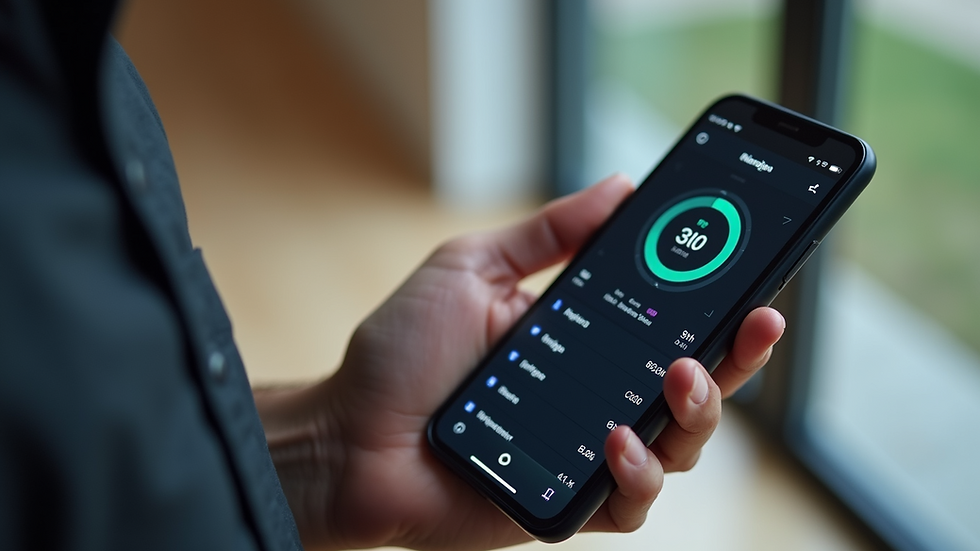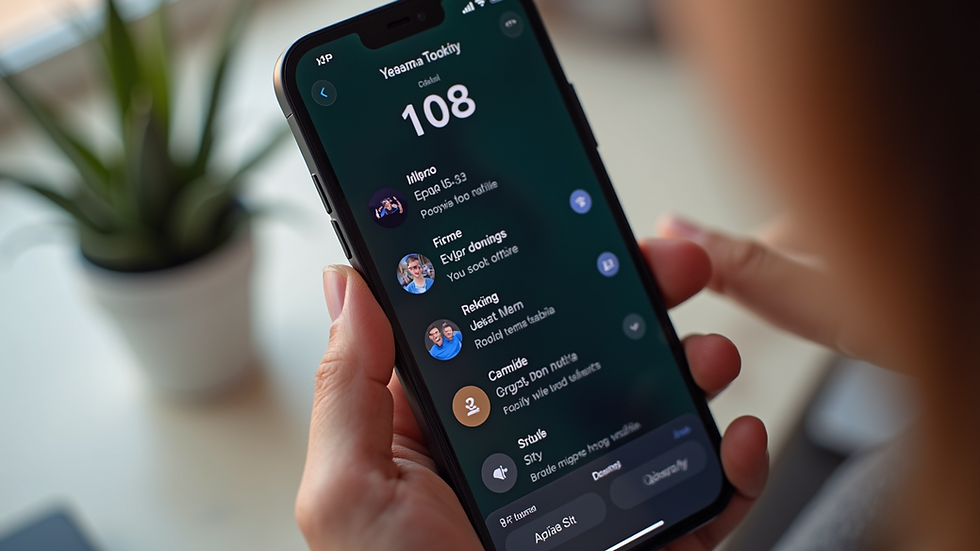How to Develop a Feature-Rich Fitness and Nutrition App in 2025?
- Jessy Rayder
- Jul 8
- 5 min read
The fitness and nutrition app market is growing rapidly as more people become health-conscious and tech-savvy. By 2025, lots of exciting advancements and expectations will shape the development of these apps. If you are considering entering this space or enhancing an existing app, you'll need to focus on the latest trends, features, and technologies that will help you meet user needs. This blog post will guide you through the steps to develop a feature-rich fitness and nutrition app effectively.
Understanding the Basics of Fitness App Development
Developing a fitness app starts with understanding your target audience. Are they beginners, seasoned athletes, or individuals focused on weight loss? Knowing your audience helps tailor features and interfaces. Collaborating with a fitness app development company can maximize your effectiveness and launch a successful product.
Key Features to Include
Personalized Workouts: Users want workouts tailored to their fitness level and goals. Implement AI algorithms to offer personalized training plans.
Nutrition Tracking: Provide users with a comprehensive food diary that calculates daily macronutrient and caloric intake.
Social Features: Encourage community interaction through challenges and social sharing options.
Integration with Wearable Devices: To track workouts and nutrition seamlessly, integrate with popular fitness trackers.
Progress Tracking: Implement features allowing users to track weight loss, muscle gain, and overall fitness journey.
Virtual Coaching: Offer access to certified trainers for live sessions or pre-recorded video workouts.
Gamification: Enhance user engagement by adding gamified features like rewards, badges, and leaderboards.

Determining the Technology Stack
A solid technology stack is crucial for the successful development of a health and fitness app. The choice of technologies depends on the desired features and the scalability of your application.
Frontend Technologies: Use frameworks like React Native or Flutter for cross-platform compatibility. These frameworks enable you to build apps for both iOS and Android simultaneously.
Backend Technologies: Consider Node.js or Python for server-side development that can handle a large number of users and provide real-time updates.
Database: Use cloud-based databases like Firebase or MongoDB for storing user data securely.
API Integrations: Implement API integrations for third-party functions like payment gateways, and health data (e.g., Apple HealthKit, Google Fit).
Prioritizing User Experience (UX)
A great user experience is fundamental for the success of a fitness and nutrition app in 2025. Users won't stick around if the interface is confusing or cluttered. Here's how to improve UX:
Simplified Navigation: Ensure that the app’s structure is intuitive and uncomplicated. Organizing information logically will help users find what they need without frustration.
Visual Hierarchy: Use font sizes, colors, and media strategically to direct users' attention to essential features.
Feedback Mechanisms: Provide users with immediate feedback on their inputs, whether they are logging workouts or tracking meals.
Accessibility Features: Ensure the app is usable by everyone, including those with disabilities. This can include voice instructions, text resizing, and color contrast adjustments.

Focusing on Personalization
The future of fitness and nutrition apps lies in personalization. Users crave experiences that resonate with their individual interests, lifestyles, and goals. Here are some ways to achieve this:
User Profiles: Allow users to create profiles with their fitness goals, dietary preferences, and activity levels.
Machine Learning: Implement machine learning algorithms to analyze user data and make recommendations based on their progress and preferences.
Adaptive Learning: The app should adjust features, workouts, and meal suggestions over time as users meet their goals or change objectives.
Custom Reminders: Enable personalized notifications for workouts, meals, and hydration based on user schedules.
By integrating personalization, you not only enhance engagement but also improve retention rates.
Deployment and Marketing Strategies
Once your app is developed, it's time for deployment. A thorough testing phase will help ensure that all features function smoothly. Various app stores should be targeted for launch, including Apple's App Store and Google Play.
Marketing Your App
SEO and Content Marketing: Implement an effective strategy to ensure your app is discoverable. Creating informative content can position your app as a thought leader.
Social Media Promotion: Utilize platforms like Instagram and TikTok to promote your app visually. Leverage fitness influencers for added exposure.
Feedback and Updates: Use user feedback to refine features and make regular updates based on user needs and preferences.
Affiliate Marketing: Collaborate with health and fitness brands for promotional opportunities to reach a broader audience.
Budgeting for Development
When considering the health and fitness app development process, budgeting is crucial. Costs can vary based on:
App Features: The more features integrated, the higher the cost.
Development Team: Hiring an experienced team may be more expensive but often leads to better outcomes.
Marketing Budget: Allocate enough resources to promote the app once launched.
Leveraging Integration with Wearable Devices
One trend that will continue to dominate the fitness and nutrition app space in 2025 is the integration with wearable devices. This adds a layer of convenience for users who can track their fitness data without needing to input it manually.
Benefits of Wearable Integration
Real-time Data: Capture data like heart rate, calories burned, and steps taken instantly.
User Engagement: Users are more likely to engage with features that sync with devices they already own.
Enhanced Motivation: Providing real-time feedback can motivate users to reach their health goals more effectively.
Building a Community Around Your App
Creating a sense of community can significantly enhance the user experience of your fitness and nutrition app. Users who interact with one another are more likely to remain engaged and committed to their health journeys. Here are some suggestions:
Challenge Features: Introduce fitness challenges where users can compete with friends and family.
Forums and Groups: Allow users to form groups or forums around specific fitness interests, such as weight loss or meal planning.
Expert Webinars: Host regular webinars with nutritionists and fitness experts for users.
Ensuring Data Privacy and Security
User data privacy cannot be overstated. As such, you’ll need to implement strong data security measures, especially when dealing with sensitive health information.
Encryption: Use encryption protocols to protect user data during transmission.
Compliance: Ensure your app complies with data protection regulations, such as GDPR or HIPAA, depending on your target market.
Final Thoughts on Developing a Feature-Rich Fitness and Nutrition App
Creating a fitness and nutrition app in 2025 involves a combination of innovative technology, user-centric design, and strategic marketing. By employing the best practices outlined in this article and keeping your users’ needs at the heart of your development process, you can build an app that stands out in the competitive landscape.
The journey won't always be easy, but with the right team, features, and focus on personalized user experience, you can redefine fitness and nutrition for the next generation.




Comments